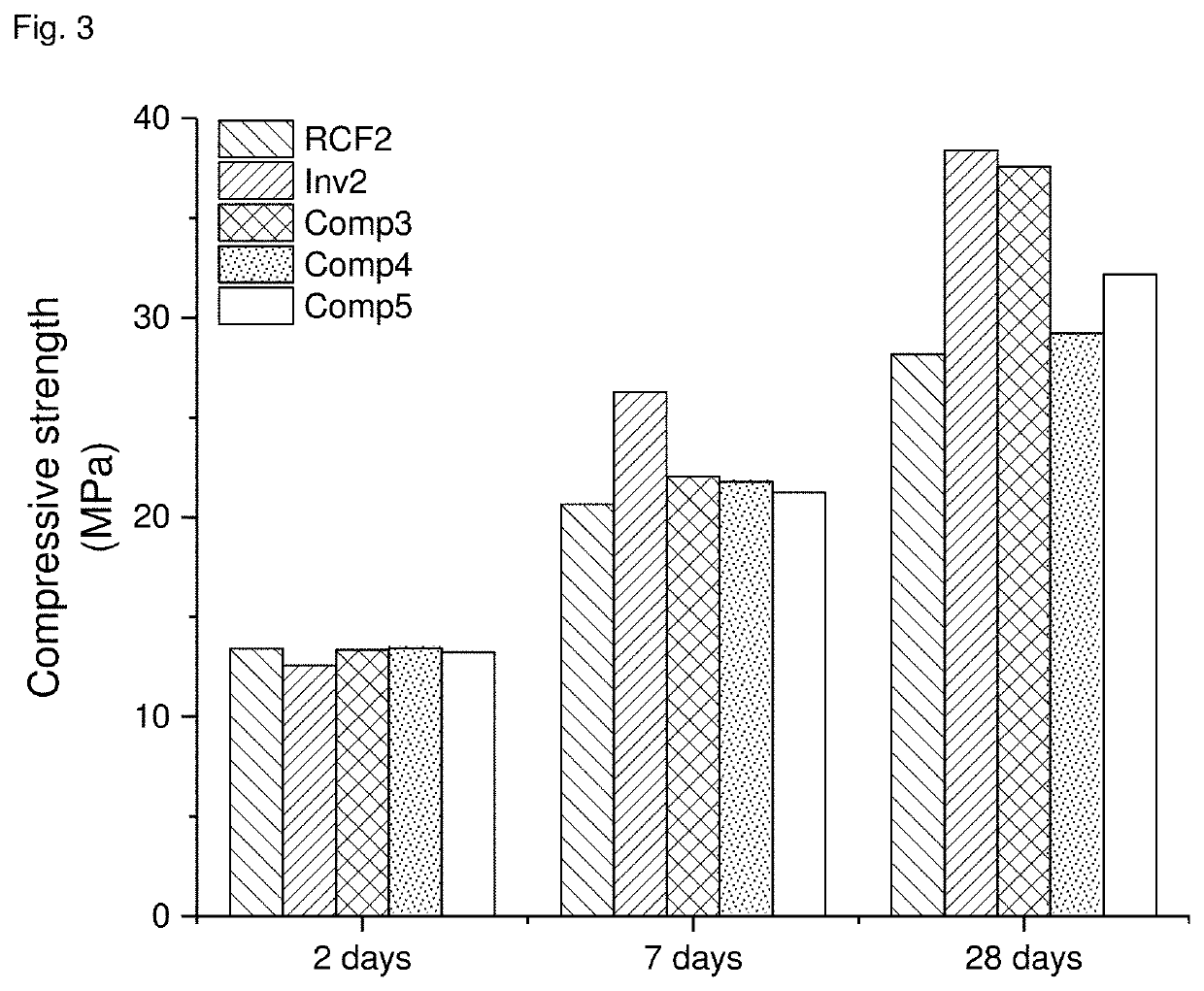Method for simultaneous exhaust gas cleaning and manufacturing of supplementary cementitous material
a technology of supplementary cementitous material and exhaust gas cleaning, which is applied in the direction of cement production, solid waste management, sustainable waste treatment, etc., can solve the problems of limited application of mineral addition limestone, limited quantities of these materials characterized by adequate quality, and large amount of mineral raw materials and energy (fuel). , to achieve the effect of reducing co2 footprint and/or sox emission, cost saving and cost-effectiveness
- Summary
- Abstract
- Description
- Claims
- Application Information
AI Technical Summary
Benefits of technology
Problems solved by technology
Method used
Image
Examples
example
[0063]To simulate RCF a mortar CEM II / B-V containing 20 wt.-% fly ash and a mortar CEM III / A containing 50 wt.-% slag were hydrated at 60° C. for 1 month, crushed and ground. The obtained ground hardened paste had the particle size distributions shown in FIG. 1 and contained the following phases: aggregates from the concrete, unreacted cement phase and unreacted slag / fly ash particles, C—S—H phase, portlandite, AFt and AFm phases, iron bearing hydrates like hydrogarnets, iron hydroxide, goethite, magnesium bearing hydrates like hydrotalcite and brucite and minor phases as known per se. The chemical composition was typical for standard CEM II / B-V as defined in EN 196-1. This hardened paste is comparable to the real industrial RCF in the beginning of the recycling process, i.e. it is only little carbonated.
[0064]Natural carbonation was simulated by exposing the obtained ground hardened paste to an atmosphere with 0.04 Vol.-% CO2 at 65% RH for one week, resulting in two RCF samples fro...
PUM
| Property | Measurement | Unit |
|---|---|---|
| particle size distribution | aaaaa | aaaaa |
| pressure | aaaaa | aaaaa |
| temperature | aaaaa | aaaaa |
Abstract
Description
Claims
Application Information
 Login to View More
Login to View More - R&D
- Intellectual Property
- Life Sciences
- Materials
- Tech Scout
- Unparalleled Data Quality
- Higher Quality Content
- 60% Fewer Hallucinations
Browse by: Latest US Patents, China's latest patents, Technical Efficacy Thesaurus, Application Domain, Technology Topic, Popular Technical Reports.
© 2025 PatSnap. All rights reserved.Legal|Privacy policy|Modern Slavery Act Transparency Statement|Sitemap|About US| Contact US: help@patsnap.com



